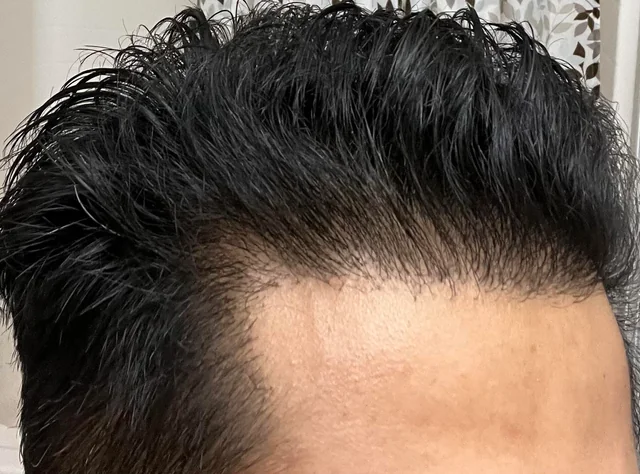Hair Transplant Surgery: What’s Involved?

Hair transplant surgery has turn out to be an an increasing number of sought-after method for people experiencing hair thinning or baldness. Advances in era and techniques have made the technique more powerful and handy, providing herbal-searching outcomes. Understanding what the surgical treatment entails—from guidance to healing—can assist potential sufferers make knowledgeable choices approximately whether it’s the proper answer for them.
Types of Hair Transplant Procedures
Two number one strategies dominate the sphere of hair transplant surgical operation:
1. Follicular Unit Transplantation (FUT)
Also referred to as the "strip approach," FUT includes casting off a thin strip of scalp from the donor location (commonly the lower back of the top), dissecting it into person follicular gadgets, and transplanting them into the recipient vicinity.
Advantages:
Higher follicle yield, making it suitable for substantial hair loss.
Cost-powerful in comparison to other techniques.
Disadvantages:
Linear scar within the donor area.
Longer recovery time as compared to FUE.
2. Follicular Unit Extraction (FUE)
FUE includes extracting man or woman hair follicles from the donor location the usage of a specialised tool and implanting them into the recipient region.
Advantages:
Minimal scarring, as no large incisions are made.
Faster recovery time and less discomfort post-surgical procedure.
Disadvantages:
Can be time-ingesting for huge areas.
Higher price than FUT.
Both techniques intention to provide everlasting, herbal-searching consequences, however the preference depends on factors consisting of the extent of hair loss, donor place great, and man or woman options.
The Consultation Process
Before undergoing hair transplant surgical treatment, a session with a qualified doctor is vital. During this level:
Hair Loss Evaluation: The health care professional assesses the extent and sample of hair loss to decide in case you’re an excellent candidate.
Donor Area Examination: The first-class and amount of hair inside the donor place are evaluated.
Discussion of Goals: Patients discuss their expectations, and the general practitioner provides a realistic outlook on what the technique can gain.
Health Assessment: A assessment of scientific history ensures that no underlying situations ought to complicate the surgical operation or recuperation.
The health care professional will also provide an explanation for the process, dangers, and aftercare requirements, assisting you're making an knowledgeable choice.
Preparing for Surgery
In the weeks main as much as the process, sufferers are frequently cautioned to:
Avoid blood-thinning medicines, inclusive of aspirin, to lessen the hazard of immoderate bleeding.
Refrain from smoking and alcohol consumption, as they can impair recovery.
Wash the scalp thoroughly on the day of surgical operation to limit contamination risks.
Arrange for transportation, as sedation or neighborhood anesthesia may make it unsafe to drive put up-surgery.
What Happens During the Procedure?
Hair transplant surgical treatment is generally carried out in an outpatient putting and can take several hours, depending at the volume of the transplant. Here’s a step-by-step breakdown:
1. Anesthesia Administration
Local anesthesia is run to numb the donor and recipient regions. In some cases, sedation can be offered to help the patient loosen up.
2. Donor Hair Extraction
In FUT, a strip of scalp is surgically eliminated, and the location is sutured.
In FUE, man or woman follicles are carefully extracted using a micro-punch tool.
Three. Graft Preparation
The extracted follicles are dissected and prepared underneath a microscope to make certain their viability for transplantation.
Four. Recipient Site Creation
Tiny incisions or slits are made within the recipient vicinity to deal with the grafts. The health care provider meticulously plans the location to ensure a natural hairline and proper density.
Five. Graft Implantation
The prepared grafts are implanted into the incisions. This step requires precision to in shape the attitude, depth, and course of present hair.
Recovery and Aftercare
Post-surgical procedure, patients can count on some swelling, redness, and mild soreness within the dealt with areas. Following the healthcare professional’s aftercare commands is essential for superior outcomes. Key components of healing encompass:
1. Immediate Post-Operative Care
Avoid touching or scratching the transplanted location.
Use prescribed medicines, including antibiotics or anti-inflammatory pills, to prevent contamination and decrease swelling.
2. Activity Restrictions
Refrain from strenuous sports, consisting of heavy lifting and exercising, for at least every week.
Avoid direct sunlight at the scalp to save you irritation.
Three. Hair Washing
Most surgeons advise ready 2-3 days before gently washing the scalp. Special shampoos can be prescribed to keep cleanliness without adverse the grafts.
Four. Shedding and Regrowth
It’s everyday for transplanted hair to shed inside the first few weeks. This is a part of the natural growth cycle.
New hair growth normally starts around three-4 months submit-surgical operation, with full effects seen after 12-18 months.
Risks and Potential Complications
While hair transplant surgery is commonly secure, ability dangers include:
Infection: Rare however viable, mainly if publish-operative care is not noted.
Scarring: FUT leaves a linear scar, even as FUE may additionally result in tiny, dot-like scars.
Shock Loss: Temporary losing of present hair near the transplanted place.
Unnatural Results: Poorly accomplished transplants can cause an unnatural hairline or choppy density.
Choosing an skilled general practitioner considerably reduces these dangers.
Is Hair Transplant Surgery Right for You?
Hair transplant surgical treatment is maximum suitable for individuals with:
Stable hair loss patterns (e.G., male or woman pattern baldness).
Adequate donor hair supply.
Realistic expectations approximately the outcomes.
It may not be best for people with diffuse thinning, certain clinical conditions, or insufficient donor hair.
Conclusion
Hair transplant surgical treatment offers a everlasting way to hair loss, with the potential to repair not best your hair however additionally your self assurance. The system’s fulfillment depends on elements including the medical professional’s know-how, the chosen technique, and the patient’s adherence to aftercare instructions. By information what’s concerned and weighing the advantages towards the risks, you can decide whether or not this transformative manner is the proper choice for you.
